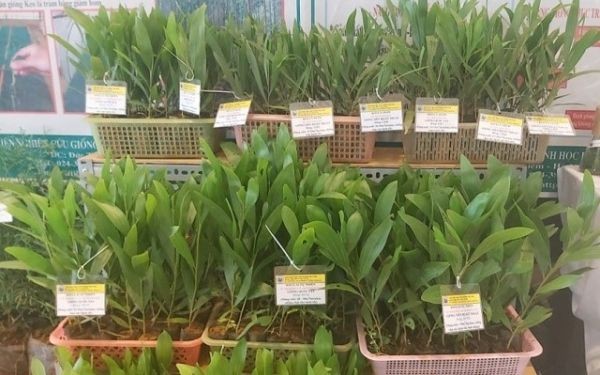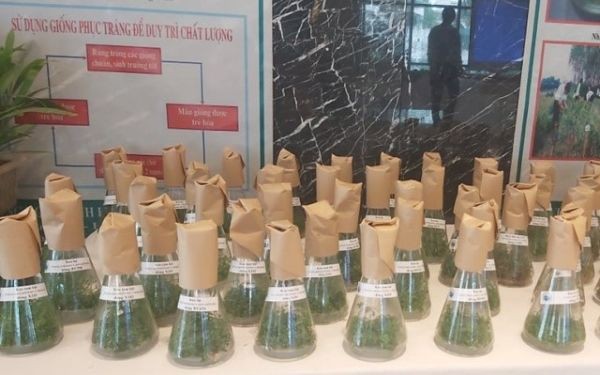No products in the cart.
NEWS
Boosting Sustainable Forestry: The Vital Role of Science and Technology
In the world of agriculture, and perhaps nowhere is it more evident than in forestry, science and technology aren’t just helpful tools – they are the very engine of progress. For sustainable development and thriving forest ecosystems, investing deeply and strategically in scientific research, particularly in genetics for new plant varieties, is paramount. This isn’t merely an academic pursuit; it’s a critical solution driving faster, more resilient growth across the entire sector.
Science serves as the bedrock for transforming traditional practices into dynamic, forward-looking industries. It provides the insights and innovations needed to overcome challenges, improve efficiency, and ensure long-term viability. For anyone passionate about nurturing plants, whether on a vast scale or in their backyard, understanding this connection between scientific advancement and healthy growth is key.
Achievements Powering Forestry Forward
Over the past decade, significant strides have been made in propelling the forestry sector towards higher value and sustainability. This progress is a direct result of evolving science and technology management that meets the demands of restructuring the industry.
Breakthroughs originating from scientific and technological initiatives have yielded practical applications now widely used in production. These include the creation of new plant varieties, the development of advanced technical standards, and the establishment of national quality benchmarks.
For example, research efforts have led to the recognition of numerous new tree species and the development of innovative techniques that enhance productivity and resilience. These advancements, supported by various programs aimed at promoting production forestry and extension services, have notably increased the adoption rate of improved clonal planting materials, averaging around 30% nationwide. This shift towards scientifically selected and propagated trees marks a significant step in boosting yield and quality.
 Scientists working on gene research to develop new high-quality tree varieties for sustainable forestry
Scientists working on gene research to develop new high-quality tree varieties for sustainable forestry
Identifying the Gaps: Challenges in Tech Transfer and Application
Despite the undeniable progress, the transfer and application of scientific advancements in forestry still face considerable limitations. While research institutions have ramped up their scientific service activities and business operations in recent years, they haven’t fully met the practical needs of the industry.
One significant hurdle lies in the supply of high-quality seedlings. The current research and breeding efforts, while successful in creating better varieties, often struggle to provide the scale and consistency required across diverse ecological zones for large-scale reforestation and plantation projects.
Furthermore, attracting and retaining top scientific talent remains challenging due to less-than-ideal policies. There’s a particular need for specific strategies to draw international science and technology professionals to contribute their expertise. A lack of structured training plans for high-level scientists in priority fields also hampers future capacity.
Even in areas like processing and preservation of forest products, where research applications are crucial, institutions sometimes lag behind the pace of private enterprises. This suggests a need for clearer strategic investment in these specific technology areas. Other vital aspects, such as forest monitoring, protection, and fire prevention, have also seen less focus from researchers, indicating a gap in applying new technologies for improved management.
 Healthy young tree seedlings in a nursery, representing the goal of providing high-quality planting material for reforestation
Healthy young tree seedlings in a nursery, representing the goal of providing high-quality planting material for reforestation
Charting the Course Forward: Strategic Research Priorities
Looking ahead, the consensus among experts is clear: sustained, decisive investment in scientific research is essential. A primary focus must be on gene research and the development of new tree varieties. This includes continued exploration of biotechnology applications for species improvement.
Research into forest pests and diseases is another critical area that requires dedicated attention to protect valuable forest resources. Moreover, focusing research on natural forest ecosystems is vital for understanding and guiding truly sustainable forestry practices that benefit both the environment and the economy.
Applying scientific progress in production has received investment, but many crucial steps still need development. There’s a strong call for research units to clearly define their investment strategies in areas like processing and preservation technologies, ensuring they align with industry needs. As one expert noted during a recent discussion, “We need research that doesn’t just create knowledge, but directly serves management, production, markets, and global integration.”
Strategies for Accelerated Impact
To move forward effectively, research institutions must adopt proactive, innovative, and highly autonomous approaches. Their work needs to be grounded in reality, closely linked to reproduction cycles, and directly responsive to practical demands from the field.
A key strategy involves strengthening the link between research institutions, universities, and businesses. This collaboration is crucial for integrating training, research, and technology transfer efforts. Science and technology programs should be restructured to be enterprise-centric, recognizing that businesses are often the end-users and drivers of innovation in application.
Furthermore, promoting the socialization of science and technology activities can encourage broader participation and investment. Research institutes and centers are encouraged to establish creative startup incubators. These incubators can nurture innovative ideas, helping them evolve into tangible products that can be widely disseminated, bringing the benefits of science directly to growers and the industry at large.
Conclusion
Ultimately, the journey towards truly sustainable and prosperous forestry is inextricably linked to the power of science and technology. We’ve seen significant progress through dedicated research in breeding and technical standards, yet challenges in technology transfer, seedling supply, talent acquisition, and specific applications like processing and monitoring remain.
The path ahead requires focused investment in genetics, biotechnology, pest management, and ecosystem research, coupled with strategic collaboration between research, education, and industry. These principles – the importance of selecting the right genetics, applying scientific methods for health and vigor, and leveraging technology for optimal outcomes – are fundamental, whether managing vast forests or tending a personal garden.
Inspired by the potential of science in fostering robust growth, Biogarden.asia is committed to providing products that bring the benefits of scientific advancement to your plants and animals. We believe that accessible, science-backed solutions are key to helping you achieve vibrant, healthy results in your own gardening or farming endeavors. Explore our range and experience the difference that quality and scientific insight can make. Share your own experiences and join the community of growers who trust science for success.



